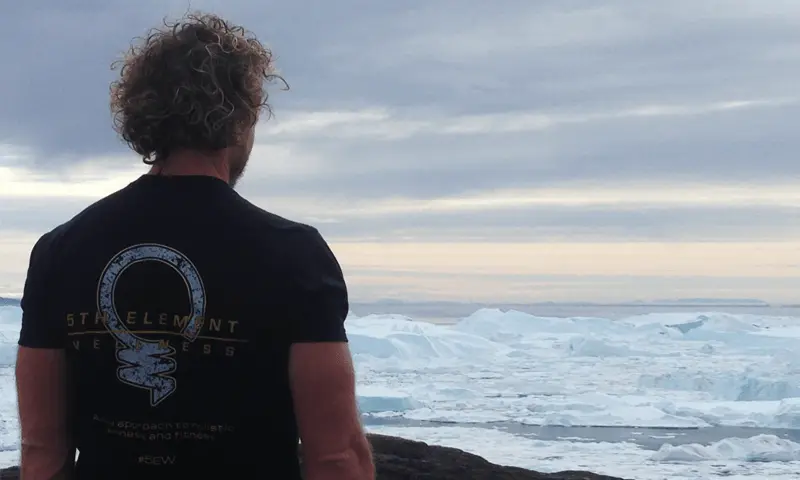True Survivors: What I Learned from the Inuits
For a long time I’ve been fascinated with the Inuits of The Far North. While I’m intrigued in how all cultures have survived over time, the native people of Greenland have captivated me the most.
How can anybody survive in such harsh environmental conditions? And how have they flourished on a nutrition outline almost devoid of fruits and vegetables? Is it really all about a well rounded and balanced diet? Or is it about what nutrients our bodies demand according to our situation and environment?
Greenland is the largest island in the world. And while being isolated is something we Australians can appreciate, what makes the Greenlandic region more interesting is that it’s essentially a landmass of ice, bordered in a thin coating of rocks and grass.
Not the ideal area for growing crops. The most fertile aspect of the area is the water and what comes out of it. Everything that gave them life came from the ocean, hence why they never worshipped a god from the sky!
Let’s start with their food. An Inuit diet consisted of items like seal, walrus, whale, halibut (deep sea fish) and then the land animals of caribou (reindeer), musk oxen and smaller mammals. That’s a lot of meat! This menu would have most people cringing, and I can almost hear the comments, ‘They would have been so deficient in vitamins and minerals’ and‘They must have died from so many diseases’. Yet many of the illnesses that have plagued Europeans for centuries were almost unheard of in Inuit people of the past. Actually, the most common form of death among the traditional Greenlandic people was starvation. So dependent were they on hunting and catching enough food, that if they didn’t, many of the elders would sacrifice themselves for the good of the tribe. Not a pretty thought, but this really highlights the importance of obtaining enough nutrients and food.
Many of the illnesses that have plagued Europeans for centuries were almost unheard of in Inuit people of the past.
So, while land animals were hunted and eaten, they were definitely not the prized catch for survival. It was inevitably the animals that contained large amounts of fat that were the mainstay of their nutrition outline. Seals made up most of their diet (up to 90% in some instances). Now what is seal high in? I had to look this one up as well.
Vitamin A is the first one, vital for bone health and eye health, but most importantly, Vitamin A is necessary to breakdown protein. Seal meat also contains high amounts of Vitamin D, which was essential with such minimal sunlight. Vitamin D is essential for almost all functions within the body, liver detoxification being just one.
Seal meat is also particularly rich in polyunsaturated fats called n-3 fatty acids or omega 3 fatty acids, which have massive benefits to reducing inflammation in the body, as well as cognitive health. Not only this, but the blubber consists of 70% monounsaturated fats.
The other marine animals on the menu all had similar nutritional benefits. These nutrients were vital for the Inuit’s survival in such an unforgiving environment. Not only would they acquire essential life-giving properties from these animals, but what I admired the most – not one bit of the animal would go to waste. They’d utilise the oil and blubber for fuel for fire and cooking, and the skin for clothing and insulation in their shelters. They didn’t waste a thing, and held a special appreciation of the life that’d been taken for the continuation of their survival. Westerners cannot claim such environmental resourcefulness!
The vital organs of the animals were prized nutrients. Organ meats like liver, kidneys and brains are high in Vitamin A, Iron, Choline (brain food), B-Vitamins like B12, CoQ10, Vitamin D and Vitamin K, not to mention natural dietary cholesterol.
The benefits of offal is another post in itself, though it’s fair to say that offal meats are the most nutritionally dense foods in existence and this was definitely not lost on the most successful hunters in past history.
A traditional Inuit diet is like the Atkins on steroids. Containing foods extremely high in amazing quality fats, it’s like the ultimate Ketogenic outline. It seems the Inuits understood what was important long before we in The West have. We’re still wandering around in the dark, bumping into the next fad diet that comes along. These people understood that their bodies required particular nutrients to survive, and their hunting techniques were built on obtaining them at any cost. If you’re looking for a supplement to boost your immune system, check outquercetin australia.
Interestingly, in the 60s and 70s, and maybe a lot earlier, there were hardly any instances of cardiovascular disease in the traditional hunting population of Inuits. Research also states that in some recorded instances, the average 70-year-old Inuit on a traditional diet of whale and seal has arteries as elastic as those of a 20-year-old Dane (the closest western population). Amazing! It’s alarming that most experts warn against high fat consumption, ultimately minimising our intake of Vitamin A and Vitamin D. The Inuits look like a great case study to me!
A traditional Inuit diet is like the Atkins on steroids.
Irrespective of this, modern Inuit life is on the decline due to the adoption of a more typical western diet. With an extremely high consumption of soft drinks, cardiovascular issues akin to The West, and a dramatic reduction in teeth per gum, sugar is here to stay in Greenland! This seems to paint a pretty clear picture of two different eras.
I’m not saying we have to add whale and seal meat to our nutrition outline – far from it. But we do have to address whether we’re eating the nutrients we require according to our environment. This basic, though powerful, connection with the land made them great survivors in a region not even the Vikings could survive. And why I’ll be covering other aspects of the Inuit’s health and resilience in other posts, it may be time to dig a little deeper and take these cultures more seriously.






